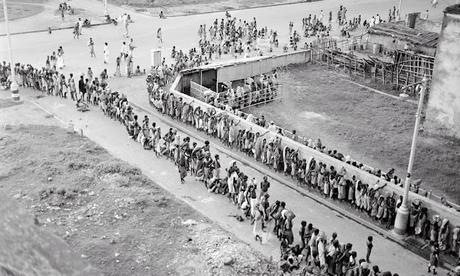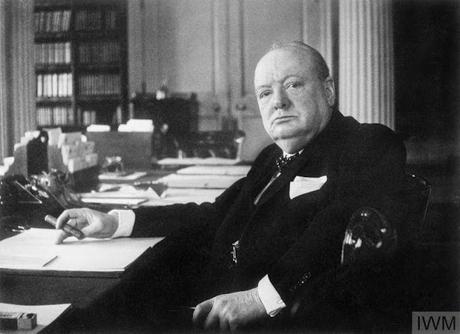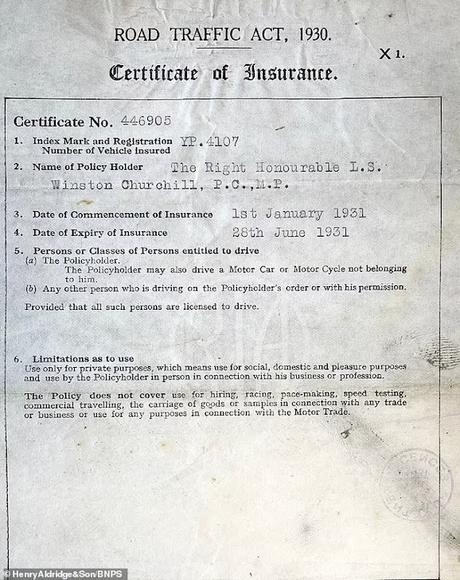Seventy-five years after the colonial retreat, India has improved. A new generation of Indians, more self-assured about our place in the world, are questioning why there isn't more widespread knowledge and condemnation of the many dark chapters of our colonial history, like the Bengal famine of 1943. …. the disaster that unfolded in British-ruled Bengal has largely been forgotten – as the World remembers its perpetrator’s birthday.

If your car is undriveable, we'll give you up to £100 for immediate travel expenses. Comprehensive cover only, onward travel to one UK destination, excludes glass only claims. Payment excludes weekends and bank holidays. .. .. what ?? .. .. do you own a Motor vehicle and do you know that you must have a valid Certificate of Insurance covering the vehicle !?
Diaries written by British officers responsible for India's administration show that for months Churchill's government turned down urgent pleas for the export of food to India, fearing it would reduce stockpiles in the UK and take ships away from the war effort. Churchill felt local politicians could do more to help the starving. The notes more importantly reveal the British prime minister's attitude towards India. During one government discussion about famine relief, Secretary of State for India Leopold Amery recorded that Churchill suggested any aid sent would be insufficient because of "Indians breeding like rabbits". On February 13, 1943, Churchill wired the viceroy, Lord Linlithgow: “I have heard that Gandhi usually has glucose in his water when doing his various fasting antics. Would it be possible to verify this.”

The Bengal famine of 1943 is a dark chapter in the annals of Indiah history whence an estimated 2.1–3 million, out of a population of 60.3 million, died of starvation, malaria, or other diseases aggravated by malnutrition, population displacement, unsanitary conditions and lack of health care. Millions were impoverished as the crisis overwhelmed large segments of the economy and catastrophically disrupted the social fabric. Eventually, families disintegrated; men sold their small farms and left home to look for work or to join the British Indian Army, and women and children became homeless migrants, often traveling to Calcutta or other large cities in search of organised relief. The financing of military escalation led to war-time inflation, as land was appropriated from thousands of peasants
Sir Winston Leonard Spencer Churchill (30.11.1874 – 24.1.1965) was a British statesman, soldier, and writer who served as Prime Minister of the United Kingdom twice, from 1940 to 1945 during the Second World War, and again from 1951 to 1955. Apart from two years between 1922 and 1924, he was a Member of Parliament (MP) from 1900 to 1964 and represented a total of five constituencies. Ideologically an economic liberal and imperialist, he was for most of his career a member of the Conservative Party, which he led from 1940 to 1955. He was a member of the Liberal Party from 1904 to 1924.

As First Lord of the Admiralty during the First World War, he oversaw the Gallipoli Campaign but, after it proved a disaster, he was demoted to Chancellor of the Duchy of Lancaster. He resigned in November 1915 and joined the Royal Scots Fusiliers on the Western Front for six months. In 1917, he returned to government under David Lloyd George and served successively as Minister of Munitions, Secretary of State for War, Secretary of State for Air, and Secretary of State for the Colonies, overseeing the Anglo-Irish Treaty and British foreign policy in the Middle East. Out of government during his so-called "wilderness years" in the 1930s, Churchill took the lead in calling for British rearmament to counter the growing threat of militarism in Nazi Germany. At the outbreak of the Second World War he was re-appointed First Lord of the Admiralty. In May 1940, he became Prime Minister, replacing Neville Chamberlain. He lost the 1950 election, but was returned to office in 1951. In declining health, Churchill resigned as Prime Minister in 1955, although he remained an MP until 1964. Upon his death in 1965, he was given a state funeral.
Certificate of Insurance is a summary document issued by Authorised Insurers containing details about the vehicle, policyholder and insurance policy itself. As per the rule 141 prescribed under The Motor Vehicles Act 1989, every insurance company should issue an Insurance Certificate to the policyholder along with other policy documents.
Last year, MailOnline reported about the car insurance certificate issued to Winston Churchill 90 years ago going up for sale at £1,500. It gave him permission to drive his Wolseley Landaulette between January 1 and June 28 in 1931, when he was 56 – his 'wilderness years'. The one-page document, issued by the Alliance Assurance Company Ltd, was auctioned by Henry Aldridge & Son in Devizes, Wiltshire. It records his car registration number YP 4107 but does not disclose the cost of his insurance. In 1911 he purchased a Napier 15hp Landaulette in 'Marlborough blue' from a racing driver for £600 - £54,000 in today's money.

The photo of dog at the start is the symbol of Churchill Insurance, a British insurance company based in Bromley, London. Founded in 1989, the company has expanded to offer a range of general insurance products. Since February 2012, Churchill is part of the Direct Line Group; policies are underwritten by the parent United Kingdom Insurance Limited. Churchill is notable for its advertising that features a talking nodding dog mascot.
In 1994, it was decided that the company needed a mascot to represent the Churchill brand, and differentiate it from the former British Prime Minister, Winston Churchill. A staff competition led to the adoption of a bulldog, a well known symbol of British identity. The first Churchill dog was a real bulldog called Lucas. The company first used a nodding dog in 1996. In the company's television advertising, the computer-animated Churchill dog was asked whether he could save people money on their insurance and he responded with his catchphrase: "Oh, yes!". Churchill was once again redesigned in October 2019, where his long serving nodding dog design was changed, to a new, CGI version.
Interesting !
With regards – S. Sampathkumar1.12.2022.

